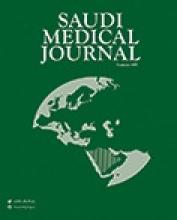10 DECEMBER 2015 ¦ GENEVA - A new framework to eliminate human rabies and save tens of thousands of lives each year has been launched today by WHO, the World Organization for Animal Health (OIE), the Food and Agriculture Organization of the United Nations (FAO) and the Global Alliance for the Control of Rabies (GARC).
The framework calls for 3 key actions - making human vaccines and antibodies affordable, ensuring people who get bitten receive prompt treatment, and mass dog vaccinations to tackle the disease at its source.
“Rabies is 100% preventable through vaccination and timely immunization after exposure, but access to post-bite treatment is expensive and is not affordable in many Asian and African countries. If we follow this more comprehensive approach, we can consign rabies to the history books,” says WHO Director-General Dr Margaret Chan.
Greatest burden of rabies in Asia and Africa
Tens of thousands of people die from rabies each year and, worldwide, 4 out of every 10 people bitten by suspected rabid dogs are children aged under 15 years. One person dies every 10 minutes, with the greatest burden in Asia and Africa.
The cost of human vaccines to protect from rabies is, however, beyond the reach of many of those who may need it. And treatment for people who are bitten can cost US$ 40–50, representing an average of 40 days of wages in some of the affected countries. Recognizing that human vaccination is currently not always affordable, the new framework emphasizes prevention through vaccinating dogs – whose bites cause 99% of all human rabies cases. A dog vaccine costs less than US$ 1.
“Vaccinating 70% of dogs regularly in zones where rabies is present can reduce human cases to zero. Eliminating canine rabies through dog vaccination is the most cost-effective and only long-term solution,” states OIE Director-General Dr Bernard Vallat. “Human deaths can be prevented when mass dog vaccination is combined with responsible pet ownership and stray dog population management, both complying with OIE intergovernmental standards, as well as with bite treatment, as recommended by WHO.”
Decreasing the cost of human rabies vaccines
Whilst vaccinating dogs will be key in the new approach, the elimination of rabies - and saving the lives of those who are bitten - will not be possible without more widely-available human vaccines.
Currently, about 80% of people exposed to rabies live in poor, rural areas of Africa and Asia with no access to prompt treatment should they be bitten. Bringing treatment closer to victims and providing wider access to affordable vaccines and potent rabies immunoglobulins, which neutralize the rabies virus before it can get a hold in the body, are vital to achieving zero rabies deaths.
Bringing down the cost of human rabies vaccines and treatments will require strong international collaboration to make quality-assured vaccines and rabies immunoglobulin available to health centres in regions where rabies is endemic.
As of 2015, WHO and the OIE Vaccine Bank have delivered more than 15 million doses of canine rabies vaccines in many countries.
Global elimination of human rabies - The time is now!
On 10 and 11 December 2015, experts, donors, and veterinary and public health officials will adopt a plan of action that is expected to deliver prompt post-exposure prophylaxis for all in rabies endemic areas as well as a framework for scaling up sustained, large-scale dog vaccination. This milestone international conference will also discuss a push for coordinated activities targeting dog and human populations by adapting proven control strategies.
Another important component is harnessing support for community awareness and engagement to facilitate and strengthen data collection, bite incidence reporting and demand for post-exposure prophylaxis. Educating children on how to avoid being bitten is also vital.
Available from: http://www.who.int/mediacentre/news/releases/2015/eliminate-rabies/en/
- Copyright: © Saudi Medical Journal
This is an open-access article distributed under the terms of the Creative Commons Attribution-Noncommercial-Share Alike 3.0 Unported, which permits unrestricted use, distribution, and reproduction in any medium, provided the original work is properly cited.






